7 January – 24 April 2016
The Architecture Gallery, RIBA
“A disaster zone where everything is lost offers the perfect opportunity for us to take a fresh look, from the ground up, at what architecture really is.”
-Toyo Ito
-Toyo Ito
Includes work by Yasmeen Lari, ELEMENTAL, OMA, Shigeru Ban, NLÉ, Toyo Ito, Metabolism (Kenzo Tange and Kurokawa Kisho) and Sir Christopher Wren.
Destruction and devastation present unique opportunities to radically rethink our environment. Creation from Catastrophe: How architecture rebuilds communities, sponsored by Ruskin Air Management, explores the varying ways that cities and communities have been re-imagined in the aftermath of natural or man-made disasters. From masterplans to reconfigure London after the Great Fire of 1666 to contemporary responses to earthquakes and tsunamis, Creation from Catastrophe poses questions about the fragility of architecture, our relationship to nature, and the power of architects to instigate change.
Through an eclectic array of drawings, photographs, film, books and models, the exhibition asks whether we are facing a paradigm shift in the way that cities and communities recover from destruction – from top down planning to a ground up approach. Original material will be brought to the UK for the first time, from architects working across the world, including Pakistan, Japan, Chile, Portugal and Nepal.
The exhibition will feature ten projects:
London after the Great Fire of 1666 – five sixths of the medieval part of the city of London, including 13,000 houses and 84 churches were destroyed by a fire that lasted 4 days. King Charles II invited architects, surveyors and engineers to present alternative plans. The original drawings for five of these plans will be presented, showing the differing ideas of the time for rebuilding the city.
Lisbon, 1755 – the Great Lisbon Earthquake almost entirely destroyed Lisbon and its surrounding areas. Four options were considered for rebuilding the city, which opted for the clean slate approach, with the medieval street pattern being replaced by large squares, avenues and a grid pattern. The exhibition will feature a model of the pioneering wooden Pomboline building frame, among the earliest seismically protected constructions in Europe.
Chicago after the Great Fire of 1871 – Chicago’s response to its fire of 1871, destroying nine square kilometres of the city centre, is told through photographs taken in the immediate aftermath of the fire and through new designs that were influenced by 19th Century European trends for wide boulevards and vistas. Drawing on the RIBA Collections, original photographs from the 1880s and 1890s will show the new high-rise buildings that arose. Chicago was the perfect melting pot of architectural talent, capitalism, new technology and a city centre in need of a rebuild.
Metabolism – the members of Japan’s most influential architectural movement, Metabolism, were all teenagers in 1945. Their work conceives of cities as living, moving and evolving entities. Their proposals for Hiroshima, Tokyo and Ise Bay in Japan as well as Skopje, Macedonia all feature in the exhibition.
Constitución, Chile – a major earthquake and tsunami hit this coastal city in 2010. The citizens and local government worked with Alejandro Aravena and his architectural practice ELEMENTAL in a community-based approach that worked with nature rather than against it.
Darya Khan, Pakistan – in 2010 one fifth of Parkistan was submerged by floods. Architect Yasmeen Lari developed a unique approach to providing amenities in areas of natural disaster, working with architecture students to train local residents to build their own bamboo homes, that were significantly more resilient to natural disaster and which didn’t rely on outside building supplies.
Lagos and Port Harcourt, Nigeria – in 2012 flooding affected 30 of Nigeria’s 36 states, part of a trend of flooding and storm surges due to erosion, deforestation and subsidence. Architecture Practice NLE has developed two different ecological buildings, Makoko Floating School and Chicoco Radio, which can accommodate varying sea levels and waterfront settlements.
Gorkha, Nepal – in response to the 2015 earthquake architect Shigeru Ban and his humanitarian relief organization Voluntary Architects’ Network provided housing for local residents through structures that could be built using cardboard tubes and rubble from building debris.
Hoboken, New Jersey, USA – eighty percent of Hoboken was submerged underwater by Hurricane Sandy in 2012. A competition was launched to ‘Rebuild by Design’, which was won by Dutch architectural practice OMA, whose plan includes a greenbelt of parkland to soak up excess water and the transformation of parks into water-containment basins.
Tohoku, Japan – the Tohoku earthquake in 2011 was the world’s fourth most powerful earthquake since records began. The resulting tsunami caused the release of radioactive materials, leading to the evacuation of 100,000 people from their homes. The exhibition highlights the Homes-for-All initiative set up by five Japanese architects: Toyo Ito, Riken Yamamoto, Hiroshi Naito, Kengo Kuma and Kazuyo Sejima. The initiative provided ‘public living rooms’ for people to gather after the disaster and lead the architects to question the role of architects and contemporary architecture.
Cover photo: Jules Guerin`s painting of Burnham and Bennett`s Plan for post-fire Chicago, 1909 © Art Institute of Chicago
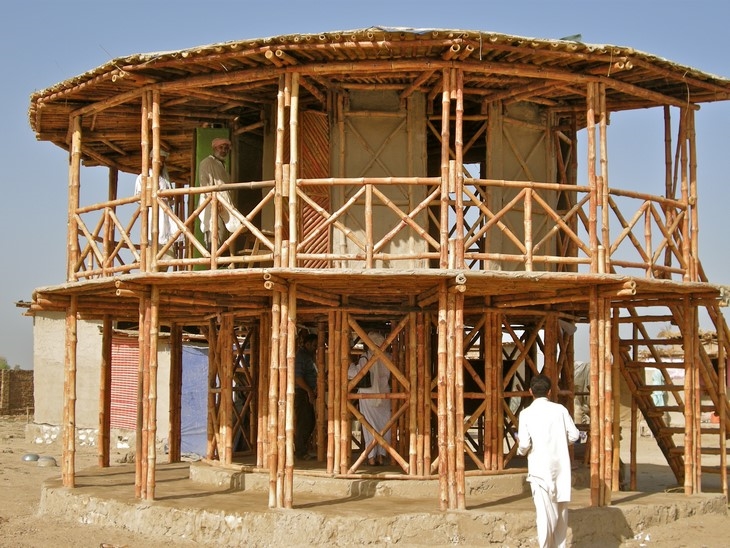 WOMEN`S CENTRE, DARYA KHAN, PAKISTAN, DESIGNED BY YASMEEN LARI (C) HERITAGE FOUNDATION OF PAKISTAN
WOMEN`S CENTRE, DARYA KHAN, PAKISTAN, DESIGNED BY YASMEEN LARI (C) HERITAGE FOUNDATION OF PAKISTAN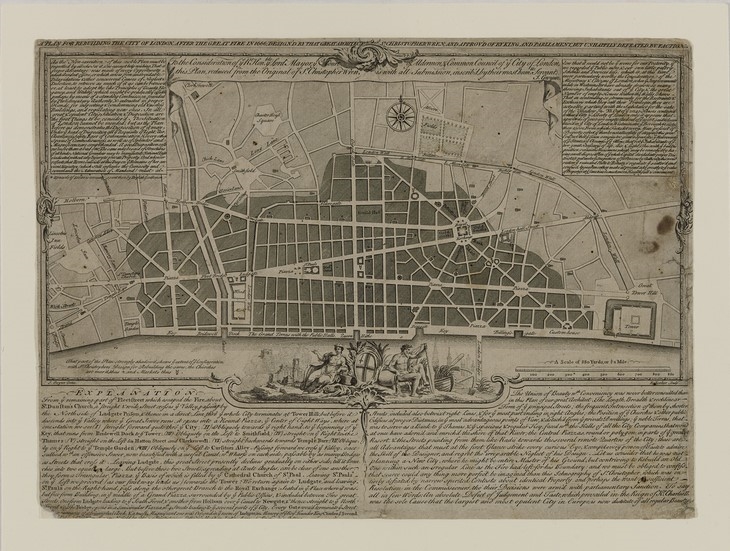 SIR CHRISTOPHER WREN`S PLAN FOR REBUILDING THE CITY OF LONDON AFTER THE GREAT FIRE OF 1666 (C) RIBA COLLECTIONS
SIR CHRISTOPHER WREN`S PLAN FOR REBUILDING THE CITY OF LONDON AFTER THE GREAT FIRE OF 1666 (C) RIBA COLLECTIONS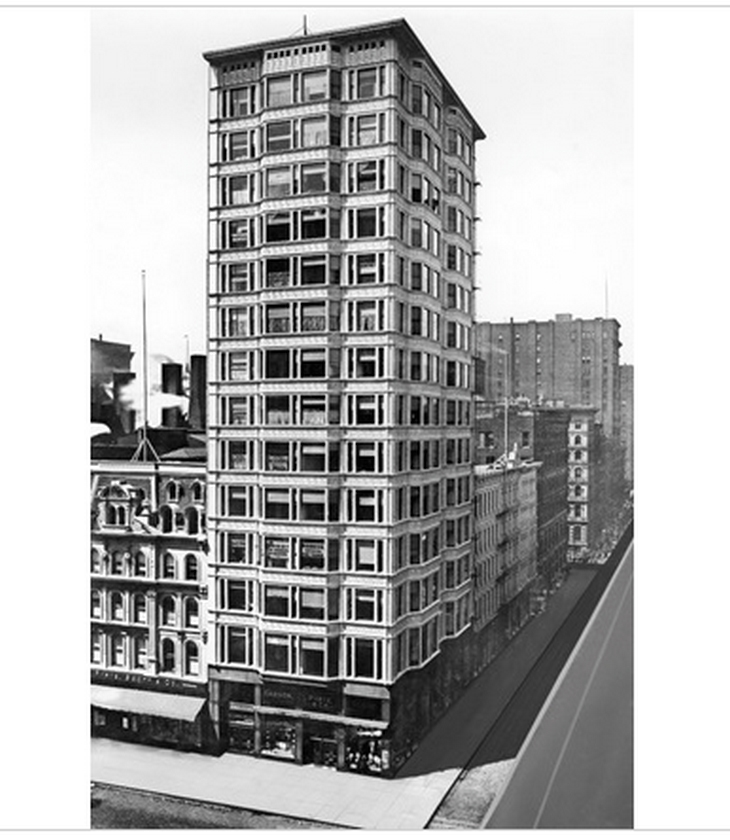 POST CHICAGO FIRE, HIGH RISE – RELIANCE BUILDING BY ATWOOD, BURNHAM & CO, NORTH STATE STREET, CHICAGO 1890-95 (C) RIBA COLLECTIONS
POST CHICAGO FIRE, HIGH RISE – RELIANCE BUILDING BY ATWOOD, BURNHAM & CO, NORTH STATE STREET, CHICAGO 1890-95 (C) RIBA COLLECTIONS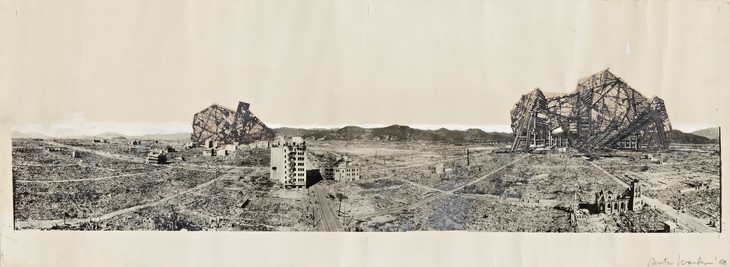 PHOTOMURAL – RERUINED HIROSHIMA, PROJECT BY ARATA ISOZAKI (C) MOMA
PHOTOMURAL – RERUINED HIROSHIMA, PROJECT BY ARATA ISOZAKI (C) MOMA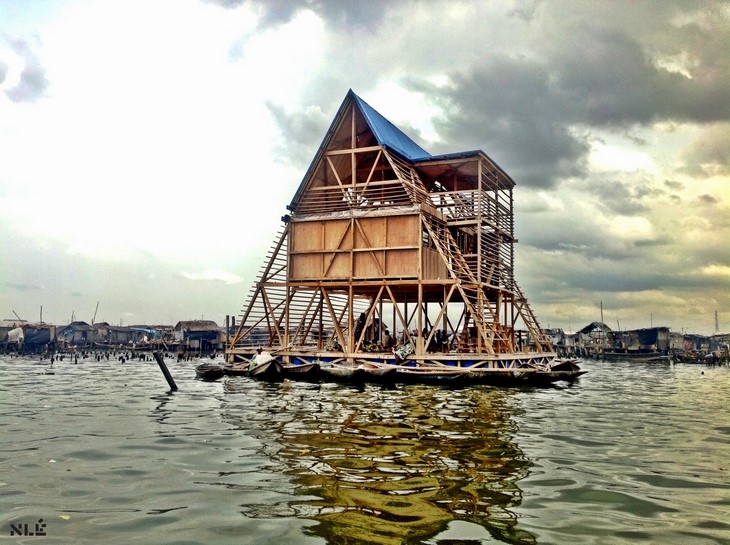 MAKOKO FLOATING SCHOOL, LAGOS, NIGERIA BY NLE (C) IWAN BAAN
MAKOKO FLOATING SCHOOL, LAGOS, NIGERIA BY NLE (C) IWAN BAAN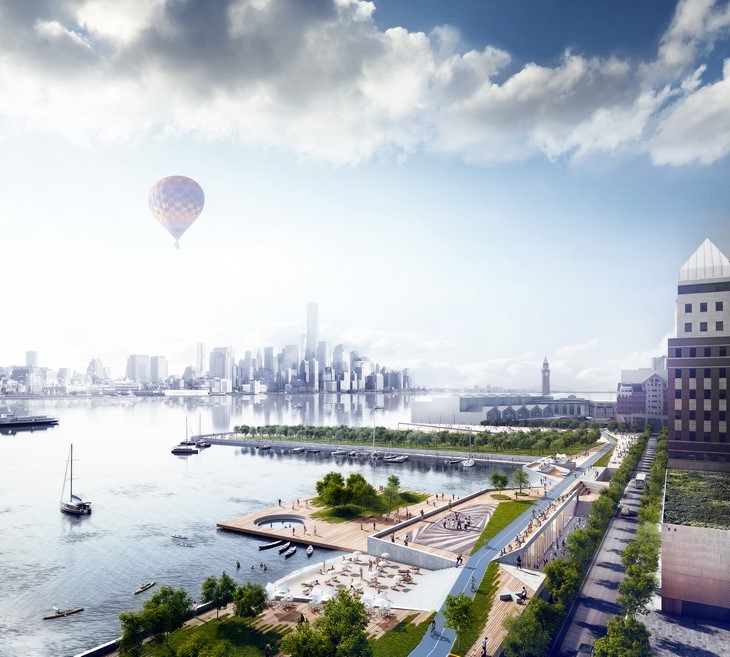 IDEAS FOR REBUILDING HOBOKEN, NEW JERSEY AFTER HURRICAN SANDY – (C) OMA
IDEAS FOR REBUILDING HOBOKEN, NEW JERSEY AFTER HURRICAN SANDY – (C) OMA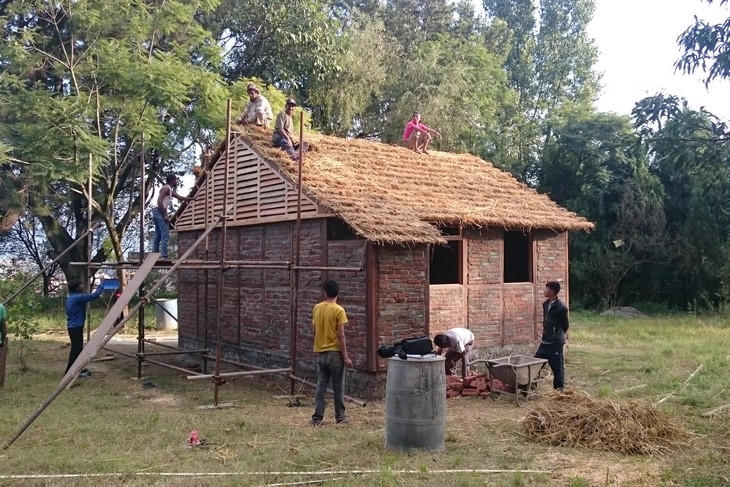 HOUSING FOR 2015 NEPAL EARTHQUAKE VICTIMS BY ARCHITECT SHIGERU (C) SHIGERU BAN, VOLUNTARY ARCHITECTS` NETWORK
HOUSING FOR 2015 NEPAL EARTHQUAKE VICTIMS BY ARCHITECT SHIGERU (C) SHIGERU BAN, VOLUNTARY ARCHITECTS` NETWORK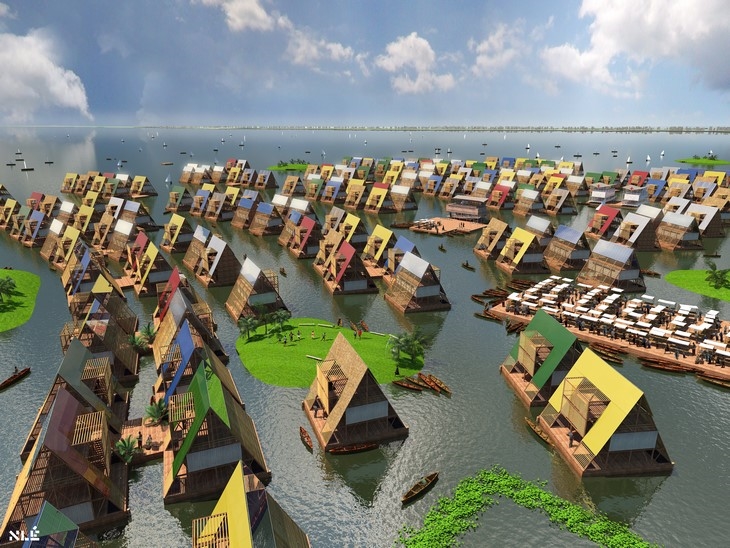 DESIGN FOR WATER COMMUNITIES, LAGOS, NIGERIA BY NLE (C) NLE
DESIGN FOR WATER COMMUNITIES, LAGOS, NIGERIA BY NLE (C) NLE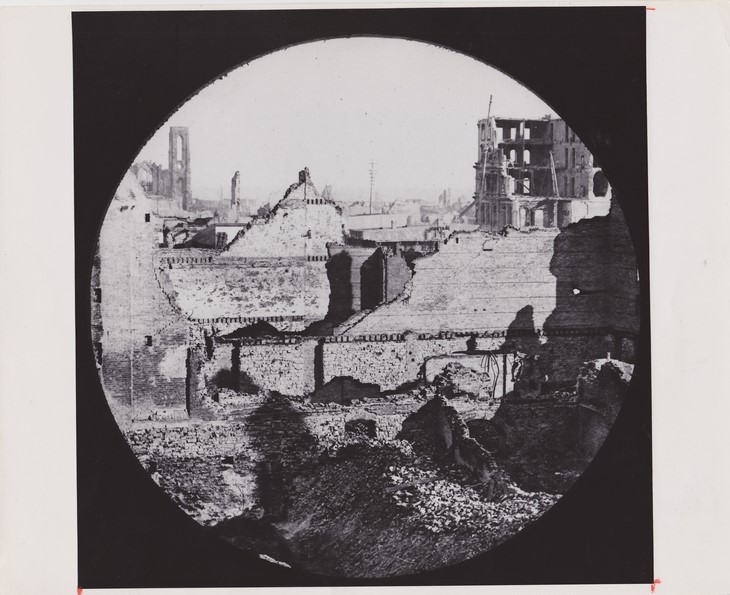 COURT HOUSE AT DEARBORN AND RANDOLPH, 1871 (C) CHICAGO HISTORY MUSEUM
COURT HOUSE AT DEARBORN AND RANDOLPH, 1871 (C) CHICAGO HISTORY MUSEUMREAD ALSO: ECOWEEK 2016: PUBLIC SPACE & TOURISM AT ONE PLANET - THE RESULTS